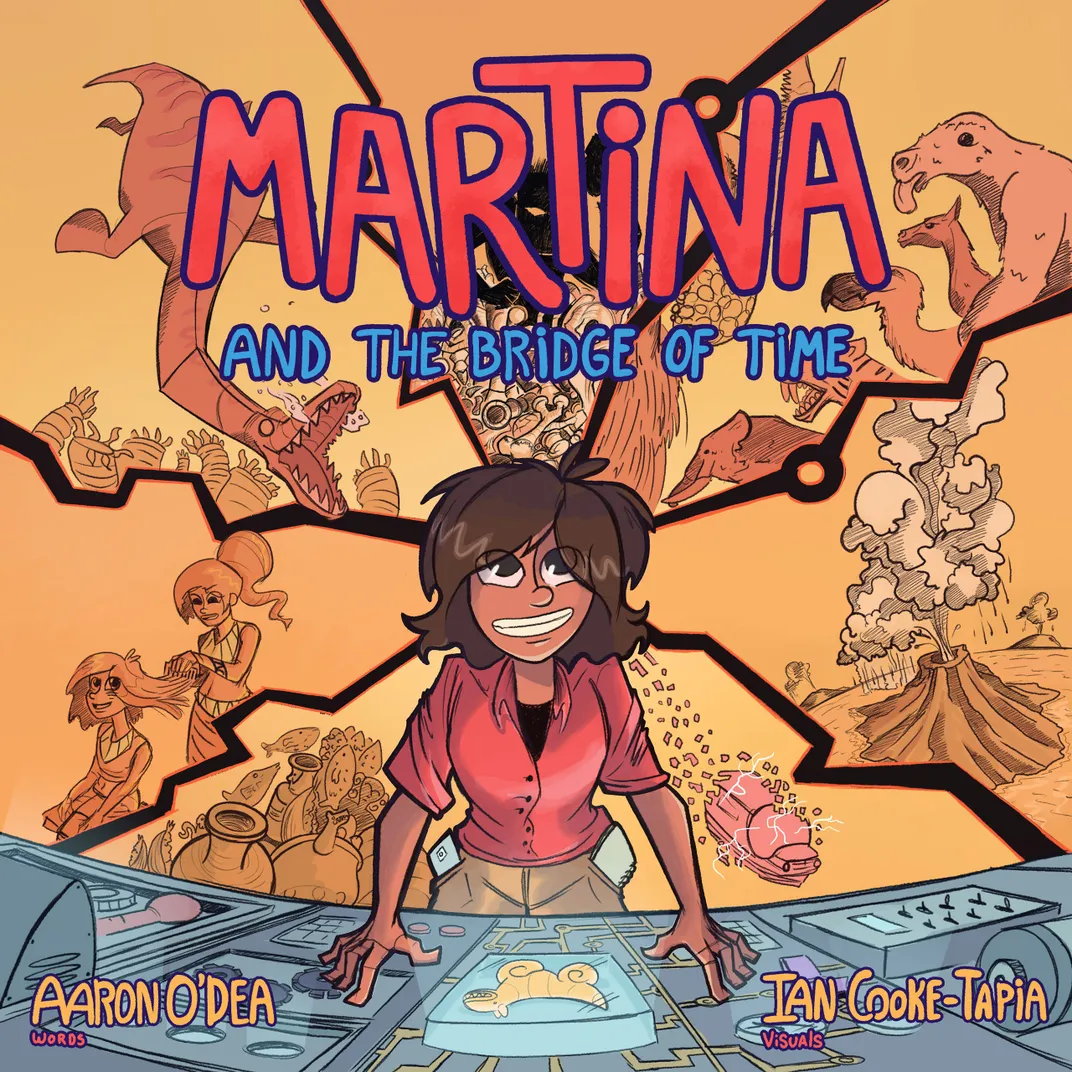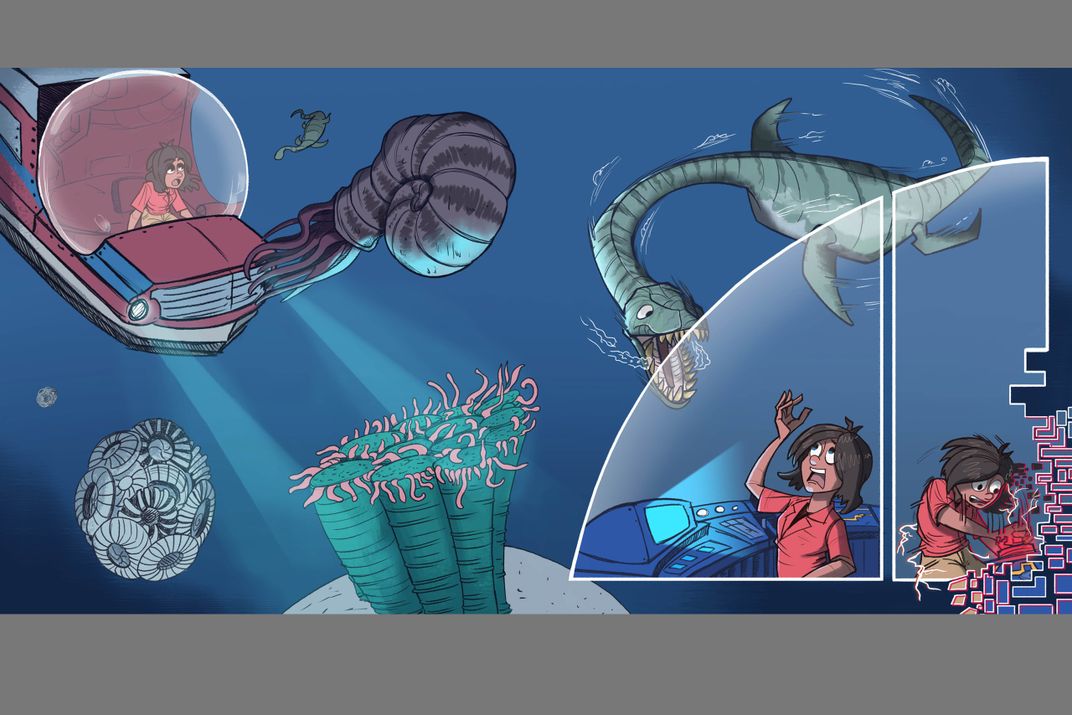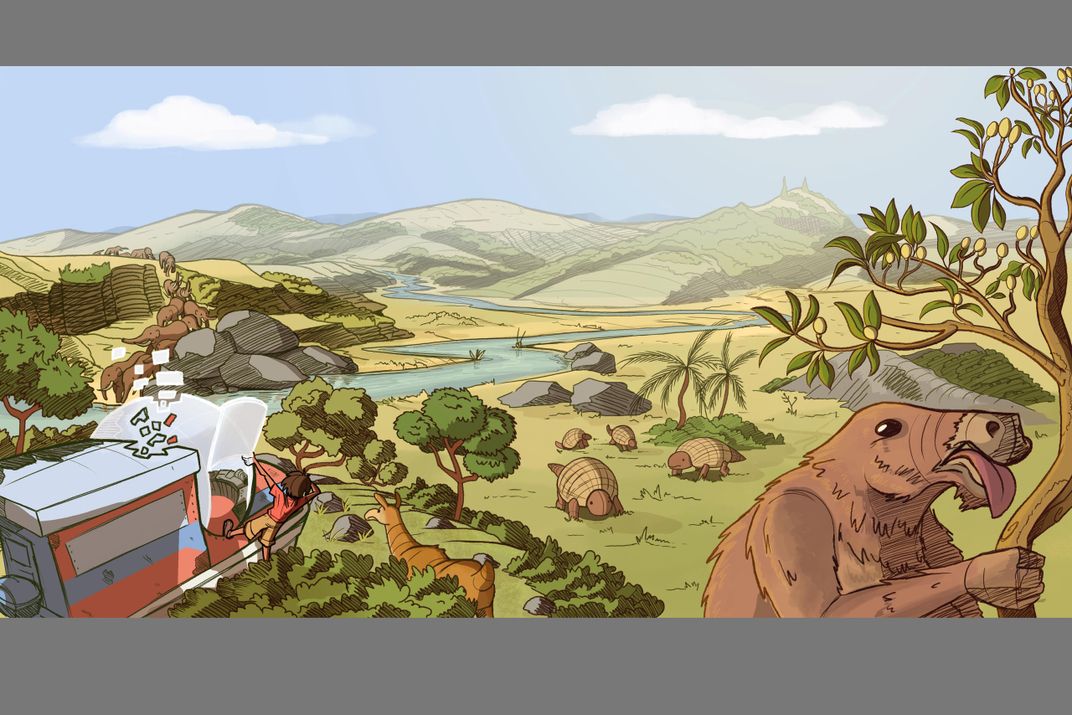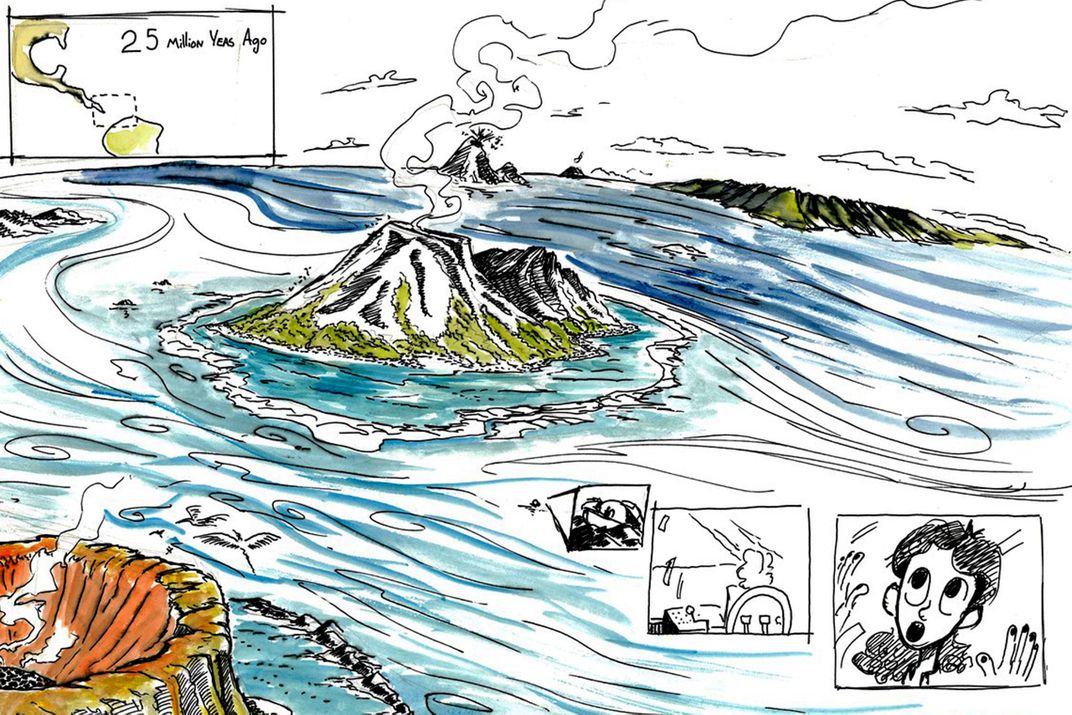SMITHSONIAN TROPICAL RESEARCH INSTITUTE
A Young Comic Book Heroine Travels Through Panama’s Deep History
‘Martina and the Bridge of Time” tells the story of the Isthmus’ formation and evolution through the adventures of a young Panamanian girl
:focal(1280x765:1281x766)/https://tf-cmsv2-smithsonianmag-media.s3.amazonaws.com/blogging/featured/martina_thumbnail.jpg)
When marine paleobiologist Aaron O’Dea talks about Martina and the Bridge of Time, it is clear how much this project means to him and how much love and effort has been put into it. The graphic novel is an engaging, fun and colorful way to explore the history of the Isthmus of Panama, from the great biodiversity exchange between the continents to the first human settlements.
O’Dea wanted to create something that would make science more accessible and captivating to young people, so he teamed up with illustrator and science communicator Ian Cooke Tapia to bring that idea to life.
“There is an appetite for the history of Panama,” said the STRI staff scientist, who has also co-authored a book with STRI paleontologist Félix Rodríguez, titled The Natural History of the Isthmus of Panama. “But we needed to get that history in the hands of children, especially to children in schools and communities far from Panama City.”
The publication was possible with the collaboration of the Smithsonian Tropical Research Institute (STRI) and financing by Panama’s National Office of Science, Technology and Innovation (SENACYT). The graphic novel was the product of an investigative process funded by SENACYT, in which a team of scientists were analyzing the biodiversity of Panama, using a group of organisms not often studied but with great potential as ecological indicators.

“Martina was born out of that research, and it’s the first product resulting from such a project that is directed at a younger audience,” said Milagros Manieri, director of Research and Development at SENACYT. “It highlights the importance of scientific communication. The way the project was structured was meant to be a bridge between scientific discovery and the public, in this case a very special part of the public: school children.”
Martina and the Bridge of Time was officially launched on March 17 via a Zoom webinar. Educators and students from all over the country, and even from other countries, watched actress Hilary Hughes do an entertaining reading, and had the chance to ask questions and connect with Martina’s creators.
But who is Martina? She’s a young girl who is bored in history class one day until she realizes that, according to her textbook, the history of Panama “began” with the arrival of the Spanish conquerors. “That can’t be right,” she thinks. But since neither her teachers nor her family nor anyone that she asks can answer her question of when it really began, and who or what was there before the arrival of the Spanish, Martina has to find the answers herself. She gathers all sorts of parts and software to build herself a time machine to go back millions of years. That is about as much as can be said without spoiling the whole story.
O’Dea reveals that both his children inspired him to write a story about Panama’s history, and Martina was inspired by his own daughter, who is “curious and passionate and at times silly,” he says. “I wanted the character to be a girl, which is very important in this moment, and to reflect my thirteen-year-old daughter Mila, who just like Martina is starting to ask questions about the world and finding her own path. I wanted to show that girls can become scientists.”

At the same time, Cooke Tapia was inspired by all the stories he has been wanting to share about Panama. He claims he became a science communicator by chance, when he went on an archaeological trip to the salines of the Sarigua desert, in the province of Los Santos in Panama, with his father, STRI zooarchaeologist Richard Cooke, and he just started drawing what he saw, the sceneries and the people. He compiled those drawings into an illustration project titled In a Dried Season, which was shortlisted for a Reportager Award. He realized he wanted to tell these stories of things that can only happen or have only happened in Panama; stories he wishes he had heard when he was younger, and he now wants to share with young people.
O’Dea has known Cooke Tapia since he was in his teens, and knows the illustrator has a deep interest and knowledge of Panama’s rich history, as well as knowing his creative vision: in 2018 they went on a field expedition to Coiba Island, off the Pacific Coast in the Gulf of Chiriquí, in Western Panama, and they started bouncing around ideas for future collaborations.
“Aaron planted the original seed of an idea for a time travel story and a character, but growing it was a collaborative process,” Cooke Tapia reveals. “One would suggest an idea, the other would throw it out, only for one of us to go and rummage in the bin two weeks later looking for it.”
O’Dea says that the hardest part was putting the story into a format that worked. They had initially contemplated making it into an illustrated book, but Cooke Tapia suggested that a graphic novel would give them a lot more space to work with. “As a comic book, we can put more story in there and deliver it in a narrative that can engage audiences and not scare them away with something that is too transparently educational.”

Before the pandemic they got to sit down together and throw ideas and sketch out storyboards. They needed to get as much on paper as they could, since Cooke Tapia lives in Wales and O’Dea would be on sabbatical in Italy. “Later on, I would realize how invaluable those first days were,” Cooke Tapia explained, “since the decisions we made back then were the strongest.” After that, their long-distance co-author relationship presented many challenges.
From the moment they started fleshing out the idea to the moment when they had the printed book in their hands, both O’Dea and Cooke Tapia agree it took between nine months and a year. The first thing they settled on was not what Martina looked like, but her clothes.
When asked about his style, Cooke Tapia isn’t even sure he has one. “I feel I draw very differently depending on the medium and what I feel like doing. But my influences tend to be more narrative, like how I arrange panels in a page, the flow of a story, that sort of thing,” he says. “I am a temporal sponge and I know that in two years I’ll be drawing very differently than I do now. I’ll be a different person then.”
He’s also working on Martina’s website, PANAMARTINA, which will be the comic hosting site. “Personally, I’d love to be able to have an ongoing webcomic series,” he points out.

O’Dea is excited about being able to get this story to as many children as possible. Already 2,000 printed copies of the graphic novel have been distributed to schools, and 100 copies were also given away for free at the Biomuseo. The digital version is also available online through the digital comics distribution platform ComiXology.
Regarding the future of Martina, both quickly answer that they’re already working on more stories.
“We have two funding proposals for science communication, one about the Panama Canal basin, and another about the Andes,” Cooke Tapia says. “Personally, I want to tell a lot more stories about Panama, and we are open to ideas.”
“There are so many wonderful science stories that need to be told,” O’Dea adds, “and I think Martina is a wonderful protagonist to tell them.”
Martina and the Bridge of Time is available in print and in digital format, both in English and in Spanish, and more information can be found on the official website PANAMARTINA.COM. Martina can be found in social media as well, on her Twitter account (@cienciamartina), Instagram account (@cienciamartina), and Tumblr account (@panamartina). You can also sign up for the newsletter to get all the latest news about Martina, including when and where you can obtain the book.



